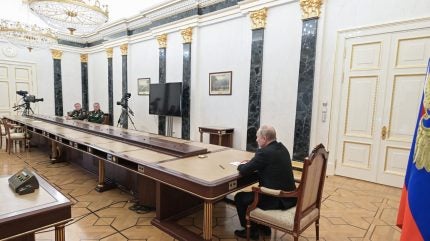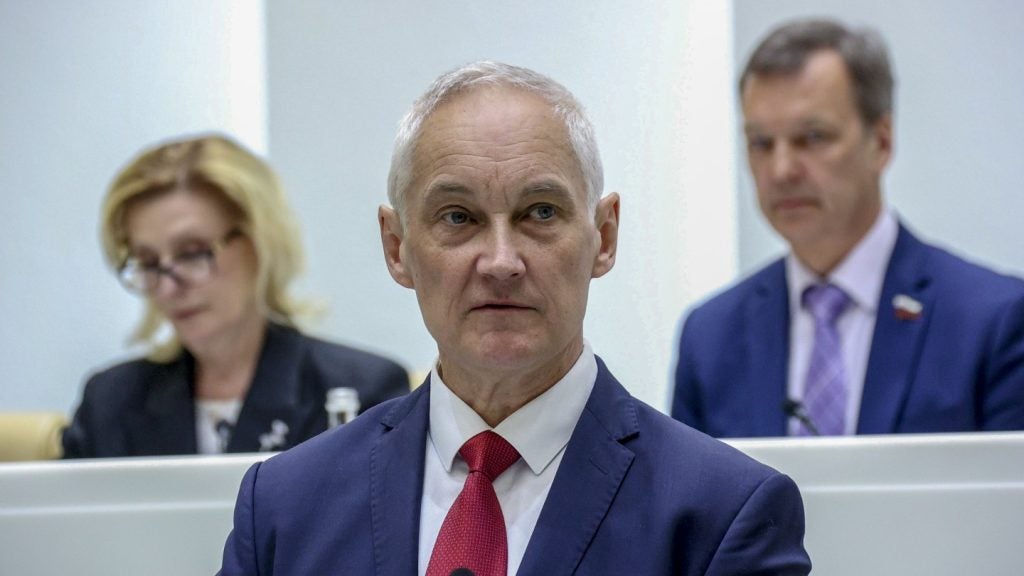
Arrests, dismissals and a wider corruption scandal within Russia’s defence industry have provoked international intrigue about the key figures advising President Putin over the invasion of Ukraine.
Yesterday (14 May), the Head of Personnel at Russia’s Defence Ministry Yuri Kuznetsov was arrested for alleged corruption charges. Investigators reportedly found more than $1m worth of roubles, other currencies, gold, watches and other luxury items at his various properties.

Discover B2B Marketing That Performs
Combine business intelligence and editorial excellence to reach engaged professionals across 36 leading media platforms.
Kuznetsov’s arrest follows the dismissal of Russian Defence Secretary Sergei Shoigu, who was replaced by technocrat economist and former deputy prime minister Andrei Belousov on Sunday (12 May).
Shoigu will reportedly be sidelined to head the Russian Security Council, albeit not afforded the unfortunate outcome met by Yevgeny Prigozhin, former leader of the Wagner mercenary army, after his short-lived coup.
But Putin’s latest purge signifies a clampdown on those he once regarded as unwaveringly loyal to him. Shoigu undoubtedly had Putin’s ear, serving as Defence Secretary for more than 12 years, seizing Crimea in 2014 and developing a long-standing friendship with the President involving fishing, hunting and even mushroom-picking trips.
This week, Putin also removed intelligence chief Nikolai Patrushev, a former KGB officer who ran Moscow’s Security Council for more than 16 years, while Timur Ivanov, one of Shoigu’s deputies, was arrested on corruption charges.

US Tariffs are shifting - will you react or anticipate?
Don’t let policy changes catch you off guard. Stay proactive with real-time data and expert analysis.
By GlobalDataA wider corruption scandal or a Putin purge?
Putin signed the executive orders to replace Kuznetsov, Shoigu and Ivanov late last night (14 May), according to the Kremlin’s website.
His simultaneous dismissal of Russia’s top defence and security officials comes as a surprise in a country where reshuffles are rare.
The likeliest factor is Putin’s intention to further centre the Russian economy around war. Defence spending has already reached 7% of GDP, and more than 40% of Moscow’s entire budget expenditure.
Such spending shows “Russia seemingly staking its entire economy on the premise it can win the war through attrition”, according to James Marques, defence analyst at GlobalData.
“If it follows current trends, Russia is going to have to continue increasing the size of its defence budget as a percentage of overall government spending”, Marques tells Army Technology. “As cash reserves dwindle and Ukrainian attacks on oil refineries continue to put pressure on revenues, Russia has to commit to forsaking other types of government spending to focus on the war.”

Replacing Shoigu with an economist aligns with Putin’s restructure. As does Belousov’s financial nous – and seeming lack of connection to the ongoing corruption scandal.
Putin will be hoping that Belousov can optimise the production of military machinery, which the Russian army is losing in vast quantities on the Ukrainian frontlines.
From February 2022 to March 2024, Russia has lost more than 15,000 vehicles, aircraft, naval vessels and weapons systems, figures from the open-source investigative project Oryx reveal.
“Russia’s current battlefield tactics still depend on large numbers of armoured vehicles, even if how they’re being employed results in significant losses,” Marques says. “It is difficult to fully trust any production figures Russia puts out, but reputable sources generally believe that around 80% of all ‘new’ combat vehicle production is not completely fresh designs from factory lines, but rather Russia’s military dipping into stocks of armoured vehicles kept in long-term storage dating back to Soviet times.”
One of Belousov’s primary mandates as Putin’s new Defence Secretary will be to ramp up production of new UAVs – presumably with an enhanced budget.
Without this, Russia’s current rate of military machine losses could see Moscow struggling to maintain stockpiles “perhaps sometime in mid-2025,” Marques believes.
“As this legacy stock dwindles, we will begin to see whether or not Russia has truly been successful in spinning up a defence industry able to cope with such vast demand for vehicles.”



